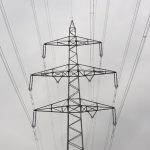Photovoltaic energy, as you may well know by now, is one of the most promising in our mix. However, the United States is not the first country in generation, much less, compared to some of the BRICS+ group. In fact, one of them has just launched a megaconstruction with which they want to “squeeze” the Sun and absorb the maximum of its capacity… and you won’t believe how they are going to do it.
World’s largest solar plant planned to open imminently in this country
The Khavda solar plant project is an ambitious renewable energy initiative by the Indian government to construct the world’s largest solar park in the desert region of Kutch, Gujarat. With a planned capacity of 30 gigawatts (GW) upon completion, the Khavda solar park will span an area of over 80,000 hectares.
To make a comparison, this is more than double the size of Singapore, an independent country. The mega solar park is being developed in multiple phases by a government entity called Solar Energy Corporation of India (SECI). You may recall that it was one of the least committed countries at the last Climate Summit.
When fully operational, the Khavda solar plant will produce enough electricity to power over 20 million households and offset 55 million tonnes of carbon emissions every year. This will significantly boost India’s renewable energy production as the country aims to meet its climate change commitments.
One of the world’s largest deserts covered by solar panels with this project
The Khavda solar plant will be located in the Rann of Kutch desert in the Khavda region of Gujarat, India. The Rann of Kutch is a large salt marsh located in the Thar Desert in the Kutch district of Gujarat. Spanning over 7,000 square miles, it is one of the largest salt deserts in the world.
The expansive and remote desert provides ideal conditions for building a mega solar power plant due to the high solar irradiance and minimal impact on local communities. Specifically, the solar park will be spread across a total area of 83,000 acres near the village of Khavda in the Great Rann of Kutch.
This massive, barren, and arid desert area provides plenty of unused land suitable for hosting a solar plant of this unprecedented size. With minimal human habitation or vegetation, the Khavda region of the Rann of Kutch emerges as a prime location for India’s plan to construct the world’s largest solar power plant.
Phases for absorbing the Sun’s energy: the goal, 30 GW renewables
The first phase was planned to be 4 GW and was completed in 2022. This will make Khavda one of the largest solar parks in the world upon completion of just the initial phase. After the first 4 GW phase, there are plans to expand the solar park in additional phases of 5 GW at a time.
The timeline stretches out to 2030 for the full 30 GW buildout. Constructing such a massive solar generation facility requires extensive planning and development in stages. The modular approach allows for steadily increasing capacity as more components are built. It also spreads the substantial investment over time.
With each successive phase, thousands of acres of new solar panels and infrastructure will be added to the sprawling renewable energy complex taking shape in the desert region of Gujarat. When finished, Khavda will play a pivotal role in realizing India’s ambitious renewable energy goals.
It is clear that India is marking a historic milestone in the generation of energy from renewable sources, a real breakthrough after its very poor results at the last Climate Summit. The truth is that in the U.S. we are also making great strides to take advantage of the photovoltaic capacity of the Sun, even putting installations in tribal communities (you may remember reading about this).
This post was originally published on 3rd party site mentioned in the title of this site






